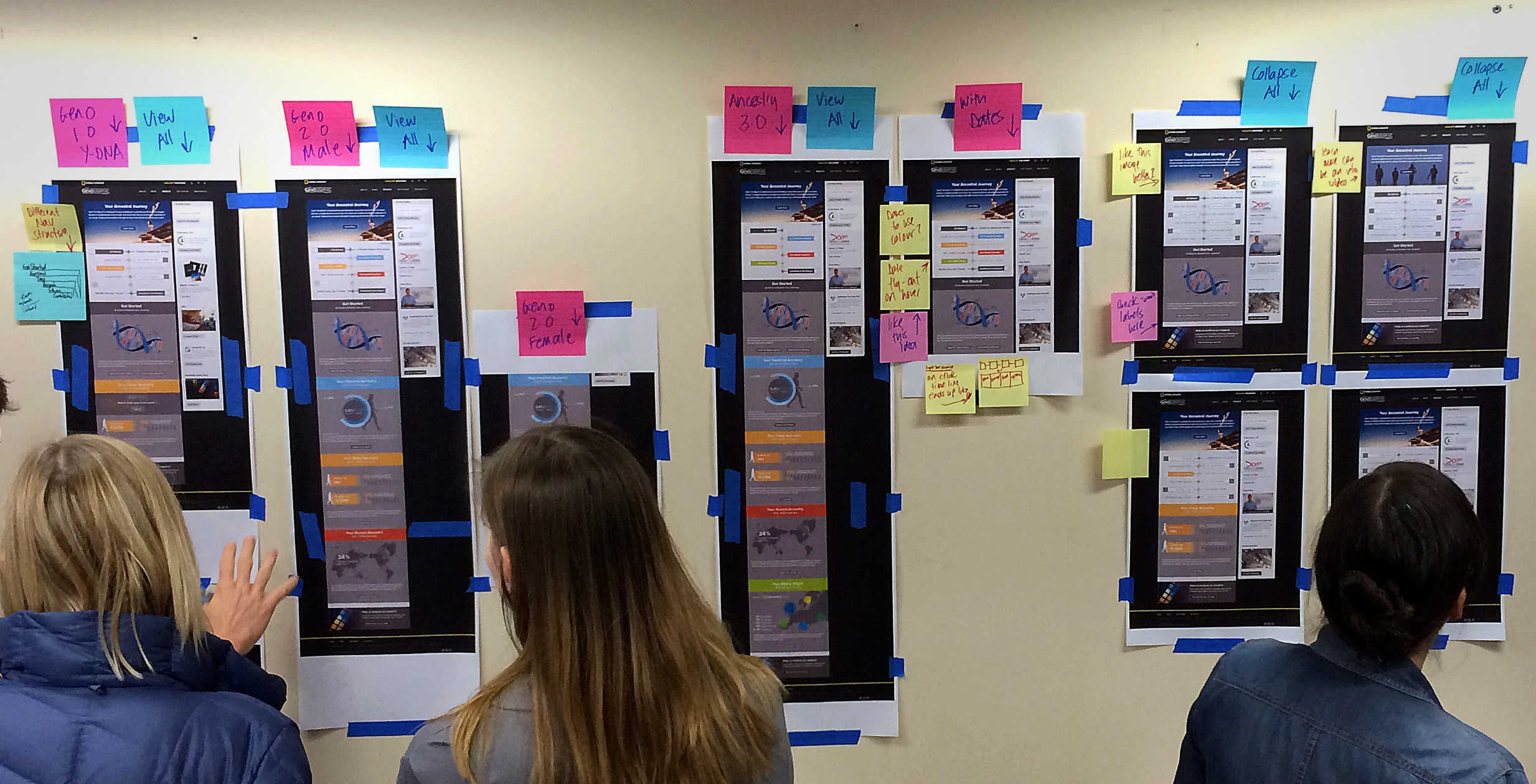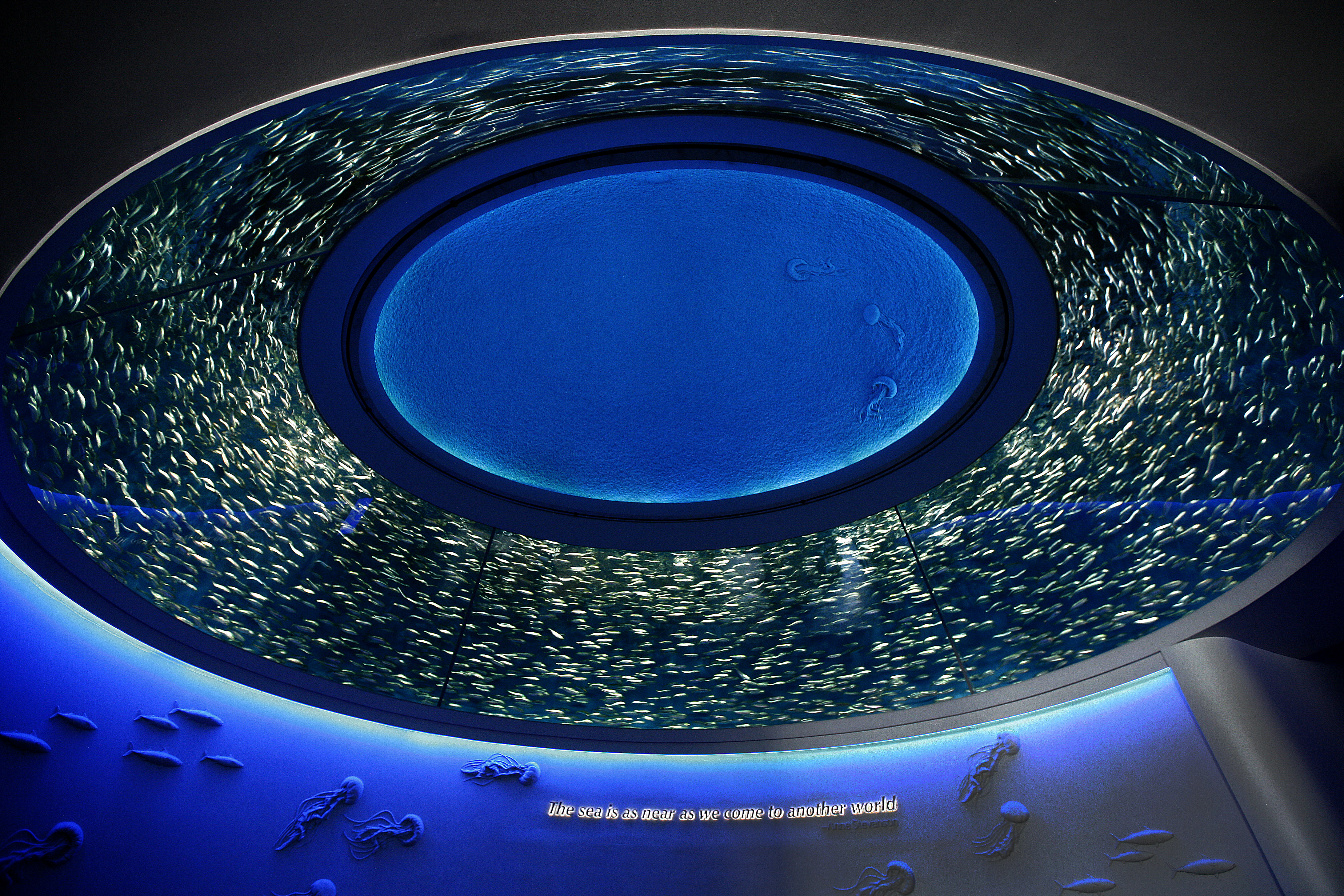On a recent trip to Northern California, I was mesmerized by the sardine tank at the Monterey Bay Aquarium – the sight of thousands of sardines swimming almost effortlessly in the same direction created a glittering silver loop around the overhead tank. When the staff threw food into the tank, the sardines started swimming in every direction, darting back and forth as they each attempted to swallow up as much food as possible. However, order was quickly restored and all of the sardines once again resumed swimming in the same direction.
This sight reminded me of how the start of a project feels — a feeding frenzy of ideas, with everyone jostling for position to get their ideas heard. Just like the sardine tank, our goal should be to get the entire team swimming in the same direction, working together to accomplish a shared vision.
In real-world applications, far too often only the loudest voices (and ideas) are heard. This is especially true in larger groups, where a handful of strongly held opinions can quickly bring a project to a screeching halt. The individuals who hold those opinions will fight tooth and nail to ensure their ideas are heard to achieve their department or division goals. Far too often, the opportunity to identify and solve the bigger challenges may be missed.
These types of situations introduce obstacles to organizational success; some team members are left feeling as if they have little or no say in the decision making process. Furthermore, many original ideas are not heard, hindering the ability to make well-informed judgments. This type of environment can stymie creativity, limit possibilities, discourage team participation, and impact long-term vision and success potential.
So, how do you foster an environment that promotes collaboration and helps your team swim in the same direction towards a unified goal?
You could try out a collaboration methodology, like Design Thinking.
Design Thinking provides a safe, collaborative environment for sharing and ideation to solve complex problems and pinpoint desirable solutions. This approach allows participants to explore possibilities and dream about what could be by using their imagination and intuition to create desired outcomes – outcomes that are often overlooked by more conventional problem-solving practices.
When Design Thinking is properly executed, problem solving becomes a fun, collaborative design effort that draws upon the diversity of ideas across an organization to solve big problems and drive transformational change.
But there’s a problem with Design Thinking.
Getting collaborative feedback on designs from all stakeholders still remains a challenge. The loudest voices tend to steer the group toward immediate decision making and, too often, opposing opinions make it hard for the product owner to reach well-informed final decisions, if any decisions at all.
It’s also easy to get stuck in an iterative cycle of decision making. In some cases, Design Thinking is similar to hitting the reset button and going back to the beginning of the decision process; this frustration can be tough to push through.
That’s why we came up with a solution.
To solve this problem, the Feedback Lab was born. The Feedback Lab was inspired by Design Thinking methodology to gather feedback from stakeholders and others in a safe and collaborative decision making environment. The expectation of the Feedback Lab is to receive equal feedback across the stakeholder community to make the best possible decisions and ensure that everyone has a voice in the decision making.
 How does the Feedback Lab work?
How does the Feedback Lab work?
A Feedback Lab provides an inclusive environment where everyone can learn about the project, ask questions, voice concerns, and, of course, provide feedback. It’s also a great way to educate people about the project and collaborative process.
Here’s how you can create your own Feedback Lab:
-
- Start by finding an open space where designs, wireframes, or concepts can be displayed. This area should be readily available to anyone who wants to stop by and see what’s going on.
- Create a setting that’s more like a social event or cocktail party than a review session. It should evoke a warm and inviting setting for your guests. Consider serving food and drinks to support the relaxed atmosphere and ensure a good turn out.
- Schedule 2-4 hours for the Feedback Lab. This allows visitors to stop by when their schedule permits to meet with the team, ask questions, and talk about their own ideas.
- Set the expectation that visitors can stay for as little or as long as they choose. Encourage stakeholders to invite members of their group who are interested in learning about the project and could offer valuable perspective. Remind everyone that this is their opportunity to voice concerns and ask questions about the project.
- Provide plenty of colorful small adhesive notepads and pens at the entrance of the room. Ask your visitors to pick up a notepad and pen and jot down their thoughts regarding the designs.
- Spend a few minutes with every visitor. (I’m talking to you, product owner, project manager, designers, and UX team members.) Encourage guests to talk about what they like, don’t like, and generally feel about what they see. Spend time listening to your visitors and make sure that everyone’s feedback is collected, including the quietest voices. Take notes, ask questions, and have open discussions about their ideas. Good ideas or suggestions can come from anyone and everyone.
- Make sure this is an inclusive environment that encourages all guests to participate in the collaborative decision making process – you want everyone to feel like they’re a valued contributor.
Participating in a Feedback Lab inspires great ideation, promotes understanding, and creates a sense of ownership in the decision making. It’s an uplifting experience for the team because it allows them to talk directly to stakeholders and visitors about the project and show off their work. Lastly, it promotes greater understanding of unknown project challenges that can quickly be addressed before building out the project.
When everyone is swimming in the same direction, it’s a beautiful thing to watch. Throw a party, be collaborative, and make a difference!



